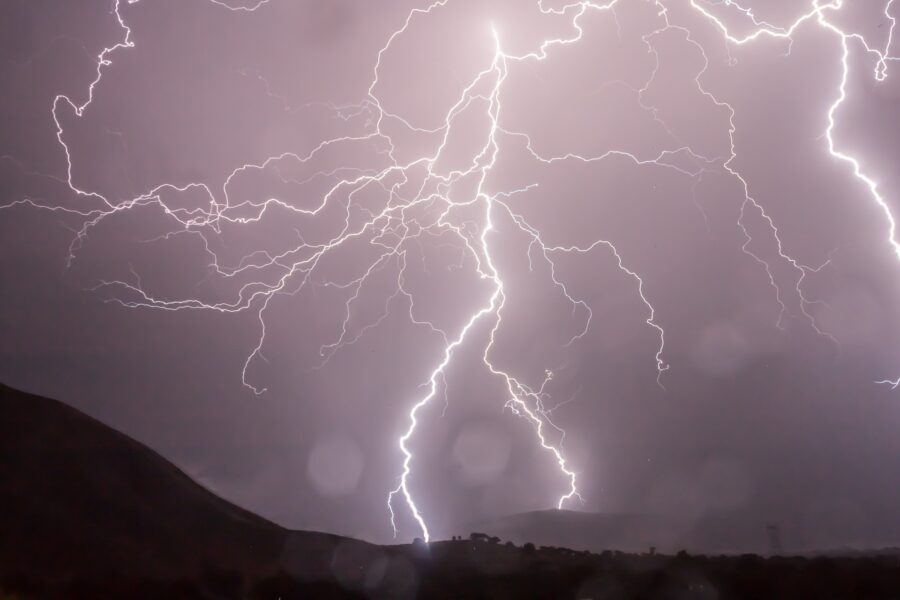See Volcano Erupting Lightning Instead Of Lava In Incredible Video
A video of lightning seemingly pouring from the Acatenango Volcano, close to the city of Antigua in Guatemala, has gone viral. Although the footage was initially captured in July, it recently gained widespread attention on social media, with over 791,000 views on the CBS News X site.
“This isn’t an optical illusion. The Acatenango volcano in Guatemala does produce volcanic lightning.”
AccuWeather
“Spider-like lightning bolts appeared to come out of a volcano when lightning struck near Acatenango Volcano in Guatemala, creating a spectacular optical illusion,” the news site wrote in the caption. A similar clip shared by AccuWeather earned more than 1.4 million views, with the site writing, “This isn’t an optical illusion. The Acatenango volcano in Guatemala does produce volcanic lightning.”
Spider Lightning
In 2018, the National Environmental Satellite Data and Information Service explained spider lightning. The agency explained that these remarkable occurrences involve widespread and extensive flashes that frequently hit the ground in various locations separated by miles. Additionally, these flashes can induce upward lightning from tall structures like a volcano.
These lightning flashes earned the name “spider lightning” due to the unique pattern they form as they swiftly move between clouds. The flashes travel horizontally over long distances, resembling the movements of crawling spiders. On occasions when these flashes are particularly powerful, they are visible from the Earth’s surface, beneath the clouds.

According to the Federal Office of Metrology and Climatology of Switzerland, the areas with the highest frequency of lightning (unrelated to any volcano) are situated between the equator and the 38 parallels in the northern and southern hemispheres. In the United States, a staggering 40 million lightning strikes make contact with the ground each year.
The Centers for Disease Control and Prevention (CDC) further emphasized that while lightning impacts all parts of the United States, the southeastern states face the most significant risk. Generally, lightning occurrences decrease as one moves from the southeast towards the northwest, except for specific locations like the Rocky Mountains, where summer thunderstorms are common.
Florida, Texas, Colorado, North Carolina, Alabama, Arizona, Georgia, Missouri, New Jersey, and Pennsylvania are the states with the highest instances of non-volcano lightning-related deaths and injuries. Florida, in particular, earns the title of the “lightning capital” of the nation, having witnessed over 2,000 lightning-related injuries over the last five decades.
Volcano eruptions can contribute to the occurrence of spider lightning due to the unique way they generate thunderclouds.
Spider lightning, although commonly linked to volcanic eruptions, is not an exclusive phenomenon. Spider lightning and regular lightning arise from the accumulation and release of static electricity in the atmosphere. Both types of lightning possess the potential to be hazardous, causing harm to individuals and property damage.
However, spider lightning showcases a sprawling and intricate pattern above thunderclouds, while traditional lightning typically follows a direct path between areas with differing charges. Due to its complex path, spider lightning covers a broader expanse of the sky, whereas regular lightning chooses the shortest route between charged regions.
Spider lightning boasts a prolonged presence compared to regular lightning, maintaining its brilliance and display over greater distances. Volcano eruptions can contribute to the occurrence of spider lightning due to the unique way they generate thunderclouds. During an eruption, massive ash, debris, and water vapor plumes are propelled into the atmosphere.
These volcanic plumes can reach the tropopause, which is the boundary between the troposphere (the lower atmosphere) and the stratosphere (the upper atmosphere). This sudden injection of material can create an unstable environment that promotes the formation of thunderclouds, often with distinctive anvil shapes.












